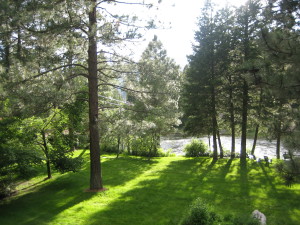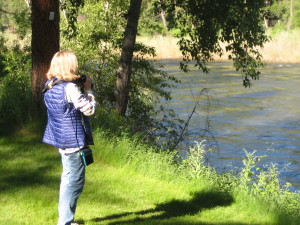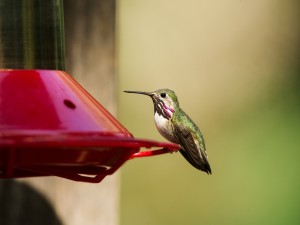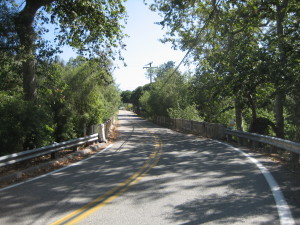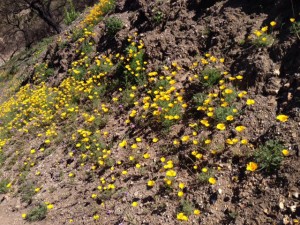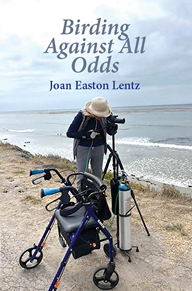Tales from a Sewage Treatment Plant –
Looking back through my journal, I find certain days stand out. Since shore bird season is upon us, and birding at the Goleta Sewage Treatment Plant is one of the best places to go, let’s step back in time to a day almost exactly 15 years ago.
AUGUST 10, 1999:
I’ll never forget this day! After weeks of no birding and meetings and caring for my dear Dad, I was sitting home, when the phone rang. It was Fred Emerson telling of a nice morning he’d spent at the sewage plant in Goleta. He mentioned that a Red Knot was there, as well as a possible Solitary Sandpiper.
I got in the car — supposed to be doing errands. Forget it. I have to get OUT! The car just drove itself, and it was headed to the Goleta sewage plant.
A few minutes later, I swung by my friend, David Kisner’s house, to see if he’d like to accompany me. He would.
It was late afternoon. The cool sea breeze was blowing the sludgy smells around as we arrived at the settling ponds. We signed in at the office, then headed out with scope and binocs.
In those days you could walk all the way around the sewage ponds, so we just took our time — stopping to gaze at the myriad shorebirds walking on the bubbling, gooey surface of the water.
Immediately I realized how rusty I’d become. It had been so long since I’d looked at shorebirds! I was groping around trying to sort out the Westerns from the Least Sandpipers, recognize the adults from the juveniles. We took it slow, examining pretty nearly every peep we could find.
As we approached the back pond, David spotted “the Knot” standing on a low berm. Through the scope I saw this amazing RED bird — dark reddish-brown and what looked like a drooping, DOWN-curved bill. Instantly, the “Knot” flew.
But we kept going, knowing we’d refind it. Took our time, talked to a couple of sewage plant employees…went over to the other side of the ponds; ended up where we started with the light at our backs and every shorebird in perfect sunshine.
Suddenly, my mind did a double-take:
“David, that bird had a decurved, drooping bill!” I say.
Knots have straight bills. What the heck?
I thumb threw the book.
Suddenly “the Knot” is before us on the mudflats. Perfect view.
David starts reading off the dimensions of Knots vs. phalaropes, etc.
Our “Knot”, he notices, has BLACK legs.
“Oh, but that’s just the mud,” says me.
Since Knots are supposedly possessed of greenish-gray-yellowish legs, this is a problem.
“He’s all muddy!” Lentz again.
“Joan, look at the bill. That’s not a straight bill. It DROOPS!”
“Yes, but if it’s not a Knot what can it be?? ”
“Joan, it’s a Curlew Sandpiper!” and David starts laughing in that definite way he has. Like, here’s a math problem and I just solved it — that kind of way.
“WHAT? Impossible!” says me, the record-keeper, mentally recalling the juvenile I’d seen in Santa Maria in 1984. It looked nothing like this bird. I’d never heard of a summer record of Curlew Sandpiper, much less an adult. For, of course, it had to be an adult bird that had retained that bright red plumage and was on its southward migration.
Still. I couldn’t believe it. REFUSED to believe it. David’s crazy. No question.
My heart is pounding with excitement. I begin calling people. Karen Bridgers, who’s just walked in the door from an exhausting day in L.A., answers the phone.
We beg her to come look at the bird since we can’t raise anybody else!
She agrees.
She arrives at the sewage plant, runs over to where David and I have set up the scope, and looks through it.
“Joanie, it’s got a down-curved bill!” she cries triumphantly.
We all grin at each other.
By this time we’ve got several books open and we take turns reading the descriptive passages.
“The underwings and axillaries are almost pure white” – check.
“The undertail coverts are white with dots” – check that and yes.
An elegant shorebird, a little smaller than the surrounding phalaropes, almost entirely rich, brick red on sides of head, neck and underparts. A real show-stopper!
Guy Tingos, Dave Compton, and the Hardies appear. Joan Hardie creeps over onto the pebbles and stones of the nearby area on her hands and knees, her belly scraping the ground in order to get 21 photos of the Curlew Sandpiper.
Great consternation ensues as we have to leave and we still don’t know the policy of the sewage treatment plant towards birders.
It turns out they’re incredibly birder-friendly (they still are).
For the next day, the bird stays. Many local birders get to see it. But by August 12, the sandpiper has disappeared.
But the weird thing is that Brad Hines, at the Santa Ynez River mouth up north, called to say he’s just seen what he thinks is the exact same bird. Huh? Is this bird going BACK to Alaska? (We never did find out. It left up there by Aug. 16 not to be seen again.)
So that’s how a rare shorebird that was found by Fred Emerson, identified by David Kisner, confirmed by Karen Bridgers, and photographed by Joan Hardie still somehow has my name connected with it.
And it remains only the second record of Curlew Sandpiper in Santa Barbara County.
Let’s go find another one!
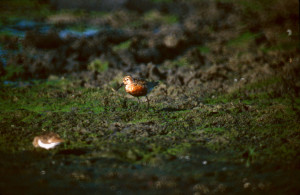
Curlew Sandpiper, August 10, 1999. Photo by Joan Hardie

